Hygrophila corymbosa
Scientific name: Hygrophila corymbosa
Family: Acanthaceae
Maximum size reached under cultivation: 15 - 40 cm (5.91 - 15.75 inch)
014
Recommended pH range: 6.3 - 7.5
Recommended water hardness: 4 - 18°dGH (71.43 - 321.43ppm)
0°C 32°F30°C 86°F
Recommended temperature range: 20 - 28 °C (68 - 82.4°F)
Preferred propagation method: Cuttings
Native to: East Asia
Growth rate: Fast
Recommended substrate: Fine gravel
Lighting requirements: Bright
Ideal placement in tank: Midground
Common Name
Temple Plant
Origin
Hygrophila corymbosa is native to Southeast Asia, particularly found in countries such as Thailand, Indonesia, Malaysia, and Vietnam. It typically grows along the edges of slow-moving rivers, marshes, and rice paddies. In the wild, it often grows emersed but readily adapts to submerged conditions in aquariums.
Growing Conditions
Hygrophila corymbosa thrives in both submerged and emersed environments. When grown emersed, it may develop thicker stems and produce attractive purple flowers above the water surface. Submerged growth results in softer, elongated leaves with a vibrant green coloration.
This species prefers bright lighting to maintain healthy foliage and compact growth. In low light conditions, the plant may become leggy or lose lower leaves. A stable environment with a pH range of 6.3 to 7.5, water hardness between 4 - 18 dGH, and a temperature of 20 - 28°C (68 - 82.4°F) supports optimal growth. Supplementing with CO2 and liquid fertilizers can greatly enhance development and color vibrancy.
Planting Area
With a typical height of 15 – 40cm (5.91 – 15.75inches), Hygrophila corymbosa is best planted in the midground to background of the aquarium. In medium-sized tanks, it can also serve as a central focal plant. It creates a natural vertical accent and offers shelter for fish and fry.
Propagation
This plant propagates easily through stem cuttings. To propagate, simply cut a healthy stem section and remove the lower leaves. Insert the cutting into a fine gravel substrate, being careful not to damage the stem. Under suitable conditions, roots will develop quickly and the plant will establish itself. It may also propagate naturally if parts break off and settle in the substrate.
Difficulty
Hygrophila corymbosa is considered easy to moderate in terms of care, making it suitable for beginners and experienced aquarists alike. While it grows quickly and adapts well to varied conditions, maintaining strong coloration and leaf density may require additional lighting and nutrient support. Regular trimming is advised to keep the plant from overshadowing other species.
Short Description
Hygrophila corymbosa, known as Temple Plant, is a fast-growing and visually striking species popular in freshwater aquascaping. Its tall, leafy stems provide a lush appearance while enhancing oxygenation and offering shelter for aquarium inhabitants. This species is highly adaptable and can be grown in both submerged and emersed conditions, making it suitable for a variety of setups including aquariums and paludariums.
Due to its rapid growth, it may require frequent trimming, especially in smaller tanks. When properly cared for, it rewards aquarists with beautiful foliage and ease of propagation. Regular nutrient dosing and appropriate lighting help prevent deficiencies such as yellowing leaves or slow growth.
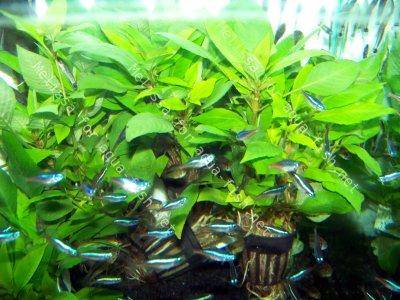
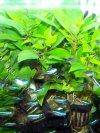
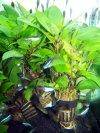
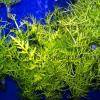 Hygrophila difformis
Hygrophila difformis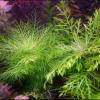 Hygrophila difformis variegated
Hygrophila difformis variegated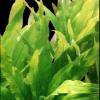 Hygrophila guianensis
Hygrophila guianensis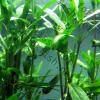 Hygrophila polysperma
Hygrophila polysperma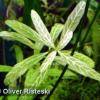 Hygrophila polysperma ‘Rosanervig’
Hygrophila polysperma ‘Rosanervig’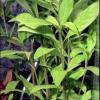 Hygrophila salicifolia
Hygrophila salicifolia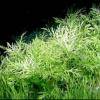 Synnema triflorum
Synnema triflorum